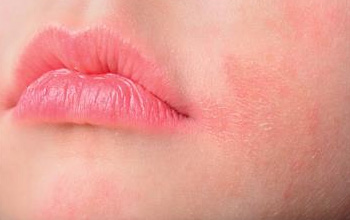Common Allergies?
ASTHMA
Asthma in adults is usually a life time disease! With most patients the early signs start in childhood. Typically having other allergies such as eczema or rhinitis. The majority of them have a family history of allergy.
The main symptoms are shortness of breath, cough, wheeze and exercise intolerance. Sometimes its severe and results in admission to hospital. Since asthma is a chronic problem patients require medication to control the symptoms most of their life.
The cause of the airways inflammation in asthma is exposure to an allergen in more than 80% of the cases. The allergen is inhaled from the air but can not be seen! Its could be a pollen of a plant, mold, house dust mites, cat dander or others. Sometimes the symptoms happen in specific but other times they are present all year round.
An allergist can perform a specific test to identify the cause of allergic asthma. And subsequently treat it with allergen specific immunotherapy. This involves giving a “vaccine” that contains the causes of the allergy specific to the patient. This can be given by small injections under the skin or by a spray under the tongue. Over a period of time it controls asthma symptoms and reduces the need for medication. The effects are usually long lasting and if given in children it can prevent the development of asthma in some cases!
ALLERGIC RHINITIS
Rhinitis is inflammation of the nasal airways. Similar to asthma it is caused in the majority of cases by inhaled airborne allergens which can not be seen by the eye! Its can result in sneezing, itch, nasal secretions or chronic nasal obstruction with snoring. If not properly controlled rhinitis can make asthma worse, give eye symptoms (allergic conjunctivitis), sinusitis and even cause new food allergies!
Common colds, caused by viruses, can make allergic rhinitis worse. So can pollution, cigarettes smoke exposure or perfumes. With viruses , however, the symptoms are short lived for a few days and with fever usually. While with allergy symptoms are for months or years! and not associated with fevers.
Treating allergic rhinitis with allergen specific immunotherapy is an effective and has long lasting benefits even when stopped!
URTIARIA
Is a common rash that affects more than 50% of people at some stage of their life. Small pimples or large raised wheals that are very itchy. They move from one place to another. Skin cells, called Mastocytes, break down with different causes and release Histamine which gives the urticaria. When severe it can result in swellings of the lip and the face. This release can be due to immunological causes (allergic urticaria) or non-immunological causes (cold, heat, pressure,etc….). In about 60% of chronic urticaria the cause is unknown (idiopathic urticaria). Food, pets, pollen, drugs are common causes of allergic urticaria. But infections, immune problems and sometimes cancer play a part in the non allergic types.
ATOPIC DERMATITIS
Sometimes called eczema. It mostly start in children under two years of age . The prevalence is about 10% in children and 2-5% in adults. It results in itching in the early stage but if continued without treatment the skin becomes thick and dark. Eczema is usually the first sign that the child will develop pother allergies such as food allergy, asthma or rhinitis.



FOOD ALLERGY
When conducting surveys its found that more than 40% of people think they have food allergy! However only about 6-8% have a real allergy confirmed by an allergist! For many people any reaction with food is considered allergy resulting in total avoidance. In children this can result in malnutrition and failure to thrive. And in some cases parental anxiety. The allergy test with expert opinion of an allergist can alleviate these problems and prevent life threatening anaphylaxis. Its important to know that allergy is not always gradual moving from small skin reactions to vomiting to problem breathing! And that if you develop only a skin reaction with the allergic food its not predicting that the next reaction will be skin only too!?
Different food items can share the same allergen. Specially when in the same family of food. This explains reactions. For example if your allergic to carrots then you may be also allergic to celery, anise, apple or potato! Similarly garlic, onion and asparagus. Or with peach, apricot, and banana!
Sometimes the food allergy is related to pollen allergy! That because some proteins are similar between them. For example: grass pollen and peaches, birch pollen and apples, feathers of parrots and canaries and eggs, latex and avocado, banana, chestnut, kiwi, walnut, pea